Microwave-based Noninvasive Sensors for Biomedical Applications
By G. Guarin, M. Hofmann, G. Fischer, R. Weigel, and D. Kissinger.
The key factor to reduce costs and time of hospitalization and to increase the independency of patients with chronic disorders or elderly people is the development of noninvasive and continuous biosensors for local and remote monitoring. Lately, new biomedical sensors based on radiofrequencies offer the possibility to measure in a noninvasive way without the disadvantage of the ionizing radiations This article shows two new methods to measure blood glucose using microwave sensors and is based on two papers that were presented at the IMS 2013 in Seattle.
The key factor to reduce costs and time of hospitalization and to increment the independency of patients with chronic disorders or elderly people is the development of noninvasive and continuous biosensors for local and remote monitoring. This article is based on two IMS-2013 papers related to the theme.
The modern society is affronting big challenges, especially due to the demographic change and his implications. A great portion of the population is getting old which directly relates to an increase of the cost of health care systems. These situations added to the prevalence of chronic diseases on the people is resulting in a loss of independency and quality of life of the people affected with chronic diseases impacting in a direct form the global economy.
In order to reduce hospitalization costs and to increment the independence of the patients, new health monitoring systems have to be developed to supervise in a noninvasive way the health status of the persons. With this type of sensors, the independency of the patients will be increased and the hospitalization and monitoring costs will be reduced.
Diabetes exemplifies one of the most widespread chronic diseases at the moment. The loss of the self-regulation of the blood glucose demands the continuous monitoring of the patient’s blood glucose level and the medication to counteract the change in the blood glucose concentration. At the moment, the sensors available to measure the blood glucose in a continuous way and that make possible the feedback to an insulin pump are invasive or minimal invasive. Noninvasive sensors are still in development; however, sensors based on microwave impedance spectroscopy have made important advances in the last years. This type of sensors, that are based on the measurement in the change of the dielectric permittivity of a material, are suitable for noninvasive measurement of different biological variables since they use nonionizing radiations and it is possible to penetrate deeper on the tissue in comparison with optical sensors. The changes in concentrations of some substances in the body are related to some specific diseases. A change in the concentration of a substance can be traced to a change in the dielectric permittivity of the substance. Therefore, with the microwave impedance spectroscopy sensor it is possible to detect changes in the concentration of body substances in order to support the monitoring and diagnosis of health disorders.
The primary goal of our research is the development of noninvasive radio frequency biosensors based on microwave impedance spectroscopy to support the monitoring of biosignals and the diagnosis of chronic diseases like diabetes.
In our investigation the changes in the propagation constant of planar waveguides like microstrip or coplanar waveguides (CPW) are used to measure the change in blood glucose concentration as a function of the frequency and as a function of the dielectric permittivity. In such planar structures, the fringe field is not confined inside of the waveguide, and a portion of the electromagnetic field is guided outside the structure. If the waveguide is brought into contact with a tissue, the fringe field interacts with it and in the case of superficial blood vessels; it interacts with the blood in the vessel. Since the permittivity of the blood is a function of the glucose concentration, a change in the glucose concentration results in a change in the propagation constant of the structure.
Our group works in two different approaches to characterize the change of the propagation constant of planar structures to measure the blood glucose level.
The first approach is based on a coplanar waveguide sensor element and a six port structure to characterize the propagation constant of the sensor [1]. Fig. 1a, shows the change in phase and in magnitude measured with this approach as a function of the voltage in the diode detectors at 6.6 GHz. With a reduction on the glucose concentration, the voltage in the detector diode increases.

Figure 1: Measurements with the CPW sensor and with the microstrip sensor.
The second approach is based on a microstrip sensor and the generation of a pseudo random noise sequence [1]. By generating the sequence an ultra-wideband portion of the spectrum can be excited to characterize the impulse response and the propagation constant of the sensor. The advantages of this method are the reduction of measurement times in comparison with frequency sweep methods and the possibility to implement low-speed and low-cost analog-to-digital converters to sample high frequency signals. Fig. 1b shows the change in the relative phase of the sensor as a function of the concentration for different frequencies. There is an increment of the relative phase with a reduction of the glucose concentration.
In the future both sensor approaches can be further optimized regarding sensitivity using digital signal processing and miniaturized through monolithic integration, making possible the integration in devices used by the patient in the daily live like a wrist watch or a smart band aid as shown in Fig 2.
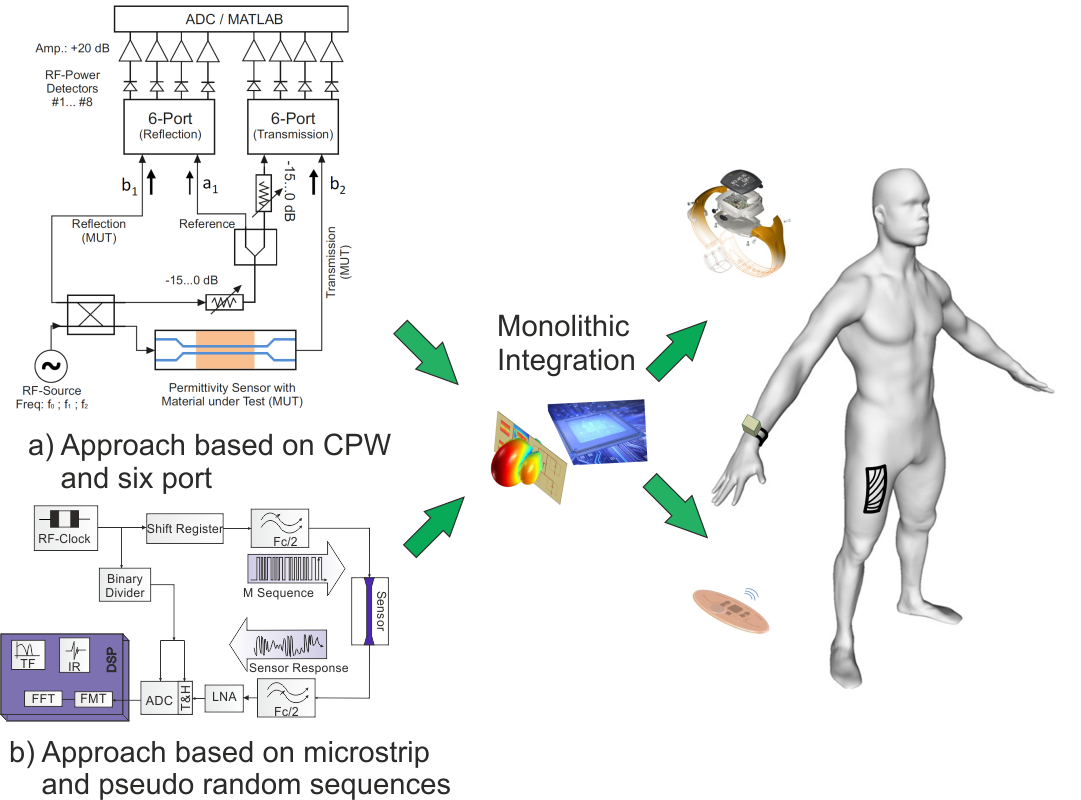
Figure 2: Miniaturization of the two systems through monolithic integration.
For Further Reading
1. M. Hofmann, S. Linz, R. Weigel, G. Fischer, and D. Kissinger, “A multiband 2-port VNA for biomedical applications based on two six-port junctions”, Microwave Symposium Digest (MTT), 2013 IEEE MTT-S International, 2-7 June 2013.
2. G. Guarin, M. Hofmann, R. Weigel, G. Fischer, d. Kissinger, “Determination of sugar concentration in aqueous solutions using ultra-wideband microwave impedance spectroscopy”, Microwave Symposium Digest (MTT), 2013 IEEE MTT-S International, 2-7 June 2013.
Contributors
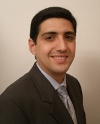 Gustavo Guarin is currently pursuing his PhD in Electric Engineering at the University of Erlangen-Nuremberg. He works at the Institute for Electronic Engineering with Prof. Dr.-Ing. Dr.-Ing. habil. Robert Weigel and with Prof. Dr.-Ing. Georg Fischer. The focus of his research is on Ultra-Wideband Microwave Sensors for spectroscopy applications in biomedicine. Read More
Gustavo Guarin is currently pursuing his PhD in Electric Engineering at the University of Erlangen-Nuremberg. He works at the Institute for Electronic Engineering with Prof. Dr.-Ing. Dr.-Ing. habil. Robert Weigel and with Prof. Dr.-Ing. Georg Fischer. The focus of his research is on Ultra-Wideband Microwave Sensors for spectroscopy applications in biomedicine. Read More
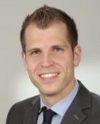 Maximilian Hofmann received the Dipl.-Ing. degree in electrical, electronic and communications engineering from the University of Erlangen-Nuremberg, Nuremberg, Erlangen, Germany. He joined the Institute for Electronics Engineering, Erlangen, Germany, as a Research Assistant. Read More
Maximilian Hofmann received the Dipl.-Ing. degree in electrical, electronic and communications engineering from the University of Erlangen-Nuremberg, Nuremberg, Erlangen, Germany. He joined the Institute for Electronics Engineering, Erlangen, Germany, as a Research Assistant. Read More
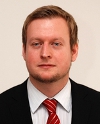 Dietmar Kissinger received the Dr.-Ing. degree in electrical engineering from the University of Erlangen-Nuremberg, Erlangen, Germany. He holds a position as Lecturer and Head of the RF Integrated Sensors Group at the Institute for Electronics Engineering. His research interests include silicon-based microwave and millimeter-wave integrated circuits as well as wireless sensors and communication systems for ultra-low power, automotive, industrial, security, and medical applications. He is a member of IEEE MTT-S and SSCS, the European Microwave Association (EuMA) and the German Information Technology Society (ITG) and Society of Microelectronics, Microsystems and Precision Engineering (VDE/VDI GMM). He was a Guest Editor for the IEEE Microwave Magazine (2012) and currently serves as an Associate Editor for the IEEE Transactions on Microwave Theory and Techniques. Read More
Dietmar Kissinger received the Dr.-Ing. degree in electrical engineering from the University of Erlangen-Nuremberg, Erlangen, Germany. He holds a position as Lecturer and Head of the RF Integrated Sensors Group at the Institute for Electronics Engineering. His research interests include silicon-based microwave and millimeter-wave integrated circuits as well as wireless sensors and communication systems for ultra-low power, automotive, industrial, security, and medical applications. He is a member of IEEE MTT-S and SSCS, the European Microwave Association (EuMA) and the German Information Technology Society (ITG) and Society of Microelectronics, Microsystems and Precision Engineering (VDE/VDI GMM). He was a Guest Editor for the IEEE Microwave Magazine (2012) and currently serves as an Associate Editor for the IEEE Transactions on Microwave Theory and Techniques. Read More







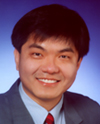 J.-C. Chiao is Greene endowed professor and Garrett endowed professor of Electrical Engineering at University of Texas - Arlington; and an Adjunct Associate Professor in the Internal Medicine Department at UT-Southwestern, Medical Center.
J.-C. Chiao is Greene endowed professor and Garrett endowed professor of Electrical Engineering at University of Texas - Arlington; and an Adjunct Associate Professor in the Internal Medicine Department at UT-Southwestern, Medical Center. 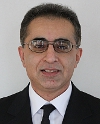 Mohammad-Reza Tofighi is an associate professor of electrical engineering with the Capital College, Pennsylvania State University, Middletown, PA. He conducts research on wireless implants, biomedical antennas, medical applications of microwave radiometry, and complex permittivity measurement of tissues using time and frequency domain methods.
Mohammad-Reza Tofighi is an associate professor of electrical engineering with the Capital College, Pennsylvania State University, Middletown, PA. He conducts research on wireless implants, biomedical antennas, medical applications of microwave radiometry, and complex permittivity measurement of tissues using time and frequency domain methods.  Bill Saltzstein is the President of connectBlue Inc., a leading provider of industrial and medical wireless solutions. Bill is also the Medical Business Development Director and joined connectBlue in February of 2011 with a vision to extend medical care out of the traditional environments through the use of wireless technologies.
Bill Saltzstein is the President of connectBlue Inc., a leading provider of industrial and medical wireless solutions. Bill is also the Medical Business Development Director and joined connectBlue in February of 2011 with a vision to extend medical care out of the traditional environments through the use of wireless technologies. 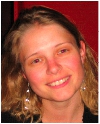 Katia Grenier (S'99 -M'03) received her Ph.D. degree in electrical engineering from the University of Toulouse, France. She is now with the LAAS-CNRS lab, in France, where her research interests are focused on the development of fluidic-based microsystems for biological and medical applications as well as for reconfigurable wireless.
Katia Grenier (S'99 -M'03) received her Ph.D. degree in electrical engineering from the University of Toulouse, France. She is now with the LAAS-CNRS lab, in France, where her research interests are focused on the development of fluidic-based microsystems for biological and medical applications as well as for reconfigurable wireless. 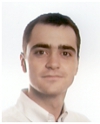 David Dubuc (S'99, M'03) received the Ph.D. degree in electrical engineering from the University of Toulouse, Toulouse, France. He is an Associate Professor with the University of Toulouse, and a Researcher with the Laboratory of Analysis and Architecture of System part of National Scientific Research Center (LAAS-CNRS), Toulouse, France. His research interests include the development of microwave circuits integrated due to microtechnologies and their application to wireless telecommunication and biology.
David Dubuc (S'99, M'03) received the Ph.D. degree in electrical engineering from the University of Toulouse, Toulouse, France. He is an Associate Professor with the University of Toulouse, and a Researcher with the Laboratory of Analysis and Architecture of System part of National Scientific Research Center (LAAS-CNRS), Toulouse, France. His research interests include the development of microwave circuits integrated due to microtechnologies and their application to wireless telecommunication and biology. 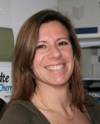 Mary Poupot received her PhD degree in Biochemistry from the University of Paul Sabatier, Toulouse, France. She is a Researcher at the Cancer Research Center of Toulouse. Her research interests are based on the impact of the tumor microenvironment on the survey of cancer cell in particular in hematopoietic diseases.
Mary Poupot received her PhD degree in Biochemistry from the University of Paul Sabatier, Toulouse, France. She is a Researcher at the Cancer Research Center of Toulouse. Her research interests are based on the impact of the tumor microenvironment on the survey of cancer cell in particular in hematopoietic diseases. 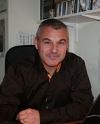 Jean-Jacques Fournié received his Ph.D. degree in microbial biochemistry from the University of Toulouse, Toulouse, France. He is currently heading the Cancer Research Center of Toulouse (CRCT), France. His fields of scientific expertise are biochemistry, pharmacology, immunology and cancer.
Jean-Jacques Fournié received his Ph.D. degree in microbial biochemistry from the University of Toulouse, Toulouse, France. He is currently heading the Cancer Research Center of Toulouse (CRCT), France. His fields of scientific expertise are biochemistry, pharmacology, immunology and cancer.  Gustavo Guarin is currently pursuing his PhD in Electric Engineering at the University of Erlangen-Nuremberg. He works at the Institute for Electronic Engineering with Prof. Dr.-Ing. Dr.-Ing. habil. Robert Weigel and with Prof. Dr.-Ing. Georg Fischer. The focus of his research is on Ultra-Wideband Microwave Sensors for spectroscopy applications in biomedicine.
Gustavo Guarin is currently pursuing his PhD in Electric Engineering at the University of Erlangen-Nuremberg. He works at the Institute for Electronic Engineering with Prof. Dr.-Ing. Dr.-Ing. habil. Robert Weigel and with Prof. Dr.-Ing. Georg Fischer. The focus of his research is on Ultra-Wideband Microwave Sensors for spectroscopy applications in biomedicine.  Maximilian Hofmann received the Dipl.-Ing. degree in electrical, electronic and communications engineering from the University of Erlangen-Nuremberg, Nuremberg, Erlangen, Germany. He joined the Institute for Electronics Engineering, Erlangen, Germany, as a Research Assistant.
Maximilian Hofmann received the Dipl.-Ing. degree in electrical, electronic and communications engineering from the University of Erlangen-Nuremberg, Nuremberg, Erlangen, Germany. He joined the Institute for Electronics Engineering, Erlangen, Germany, as a Research Assistant.  Dietmar Kissinger received the Dr.-Ing. degree in electrical engineering from the University of Erlangen-Nuremberg, Erlangen, Germany. He holds a position as Lecturer and Head of the RF Integrated Sensors Group at the Institute for Electronics Engineering. His research interests include silicon-based microwave and millimeter-wave integrated circuits as well as wireless sensors and communication systems for ultra-low power, automotive, industrial, security, and medical applications.
Dietmar Kissinger received the Dr.-Ing. degree in electrical engineering from the University of Erlangen-Nuremberg, Erlangen, Germany. He holds a position as Lecturer and Head of the RF Integrated Sensors Group at the Institute for Electronics Engineering. His research interests include silicon-based microwave and millimeter-wave integrated circuits as well as wireless sensors and communication systems for ultra-low power, automotive, industrial, security, and medical applications. 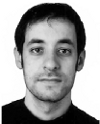 Dr. Cristiano Palego is a senior lecturer in Smart Sensors and Instrumentation at Bangor University, UK and a visiting research scientist at Lehigh University, USA. He received the Ph.D. degree in Microwave Engineering and Optoelectronics from the University of Limoges, France. He is currently a research scientist at Lehigh. His interests include electromagnetic theory, micro/nanotechnology and biomedical research as well as RF-MEMS for reconfigurable frontends, antenna arrays, and high-power applications.
Dr. Cristiano Palego is a senior lecturer in Smart Sensors and Instrumentation at Bangor University, UK and a visiting research scientist at Lehigh University, USA. He received the Ph.D. degree in Microwave Engineering and Optoelectronics from the University of Limoges, France. He is currently a research scientist at Lehigh. His interests include electromagnetic theory, micro/nanotechnology and biomedical research as well as RF-MEMS for reconfigurable frontends, antenna arrays, and high-power applications.  Dr. Caterina Merla received the Ph.D. degrees in electronic engineering from the University of Rome "La Sapienza," Italy. She is currently with the Italian National Agency for New Technologies, Energy and Sustainable Economic Development (ENEA), Research Centre in Rome and a Visiting Research Scientist at Lehigh University, Bethlehem, PA. Her research interests are mainly focused on the microdosimetric evaluation of the electromagnetic (EM) field at single cell level, biological sample dielectric measurements, and design and dosimetry of exposure systems oriented to EM protection studies and medical applications.
Dr. Caterina Merla received the Ph.D. degrees in electronic engineering from the University of Rome "La Sapienza," Italy. She is currently with the Italian National Agency for New Technologies, Energy and Sustainable Economic Development (ENEA), Research Centre in Rome and a Visiting Research Scientist at Lehigh University, Bethlehem, PA. Her research interests are mainly focused on the microdosimetric evaluation of the electromagnetic (EM) field at single cell level, biological sample dielectric measurements, and design and dosimetry of exposure systems oriented to EM protection studies and medical applications.  Yaqing Ning is currently working toward her Ph.D. degree at Lehigh University. She is involved in research on RF MEMS capacitive switches and phase shifters, as well as on biomedical devices for detection purposes. She specializes in 3D electromagnetic simulation using finite element methods.
Yaqing Ning is currently working toward her Ph.D. degree at Lehigh University. She is involved in research on RF MEMS capacitive switches and phase shifters, as well as on biomedical devices for detection purposes. She specializes in 3D electromagnetic simulation using finite element methods. 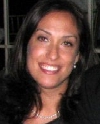 Caroline Multari is currently working towards her Ph.D. at Lehigh University in Materials Science and Engineering, focusing on research in point-of-care microfluidic biosensors and developing polymeric biomaterials for bioparticle capture.
Caroline Multari is currently working towards her Ph.D. at Lehigh University in Materials Science and Engineering, focusing on research in point-of-care microfluidic biosensors and developing polymeric biomaterials for bioparticle capture. 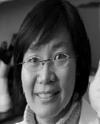 Dr. Xuanhong Cheng is the Rossin Assistant professor of Bioengineering and Materials Science and Engineering at Lehigh University. She received her Ph.D. in bioengineering at University of Washington. She joined Lehigh University, where her current research interest is focused on developing new nanomaterials and microfluidic platforms to analyze intact, live bioparticles, such as cells and pathogens at the point of need.
Dr. Xuanhong Cheng is the Rossin Assistant professor of Bioengineering and Materials Science and Engineering at Lehigh University. She received her Ph.D. in bioengineering at University of Washington. She joined Lehigh University, where her current research interest is focused on developing new nanomaterials and microfluidic platforms to analyze intact, live bioparticles, such as cells and pathogens at the point of need. 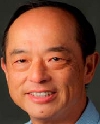 Prof. James C. M. Hwang received the Ph.D. degree in materials science from Cornell University, Ithaca, NY. He joined Lehigh University, Bethlehem, PA as a Professor of electrical engineering and Director of the Compound Semiconductor Technology Laboratory. His current research interests include MEMS, microwave and photonic devices and integrated circuits, and bio-electromagnetics.
Prof. James C. M. Hwang received the Ph.D. degree in materials science from Cornell University, Ithaca, NY. He joined Lehigh University, Bethlehem, PA as a Professor of electrical engineering and Director of the Compound Semiconductor Technology Laboratory. His current research interests include MEMS, microwave and photonic devices and integrated circuits, and bio-electromagnetics. 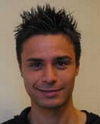 Marco Mercuri is currently working towards the Ph.D degree within the TELEMIC research group of the Department of Electrical Engineering (ESAT), KU Leuven, Belgium. His research interests include biomedical applications of microwave/RF, wireless sensors, and microwave/millimeter-wave measurements.
Marco Mercuri is currently working towards the Ph.D degree within the TELEMIC research group of the Department of Electrical Engineering (ESAT), KU Leuven, Belgium. His research interests include biomedical applications of microwave/RF, wireless sensors, and microwave/millimeter-wave measurements. 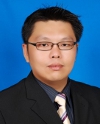 Ping Jack Soh is currently working towards his Ph.D in the ESAT-TELEMIC Research Division, Katholieke Universiteit Leuven, Belgium. His research interests include planar antennas, flexible/textile antennas, on-body communication, metamaterials, passive microwave components and microwave measurements.
Ping Jack Soh is currently working towards his Ph.D in the ESAT-TELEMIC Research Division, Katholieke Universiteit Leuven, Belgium. His research interests include planar antennas, flexible/textile antennas, on-body communication, metamaterials, passive microwave components and microwave measurements. 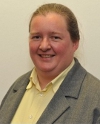 Dominique Schreurs received the Ph.D. degree in electronic engineering from University of Leuven (KU Leuven), Belgium. She is a Full Professor at KU Leuven. Her main research interests concern the (non)linear characterization and modelling of microwave devices and circuits, as well as (non)linear hybrid and integrated circuit design for telecommunications and biomedical applications.
Dominique Schreurs received the Ph.D. degree in electronic engineering from University of Leuven (KU Leuven), Belgium. She is a Full Professor at KU Leuven. Her main research interests concern the (non)linear characterization and modelling of microwave devices and circuits, as well as (non)linear hybrid and integrated circuit design for telecommunications and biomedical applications.